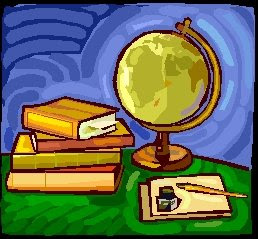What I have created here should look generally familiar to any student of language art, but bears the unique marks of my own experience and philosophy of education.
The Writing Process
1. Task exploration (read, confirm comprehension; identify audience, purpose, genre of communication; brainstorm/research ideas)
2. Topic focus (narrow topic, write a thesis that is specific)
3. Content building (with thesis in mind, gather relevant ideas from brainstorming, text, imagination, or in-depth research)
4. Content organizing (outlining, formatting of paragraphs as necessary)
5. Writing (including documentation as necessary)
6. Editing, identification of challenge areas and revision
7. Publishing and progress evaluation
The Reading Process
1. "Pre-reading" never hurts. This means getting a feel for what type of text you're looking at and what type of reading skills you should employ. For instance, a pop magazine article about your favorite band will require a different kind of reading than a current events magazine article about foreign policy. You can tell the difference by looking at length, title, illustrations, etc.
2. A first reading should produce a basic comprehension and/or gut reaction to the piece. Students might need to employ a study strategy, for instance listing, highlighting, or journaling.
3. A second reading may be required for a challenging text, like poetry for instance. In this case, the reader should take one sentence, phrase, or paragraph at a time and attempt to re-state it in his/her own words. The use of dictionaries, footnotes, and discussion may be helpful.
4. Analyzing comes next. At this point, many facts and/or details have been conveyed to the reader, but they may not be particularly meaningful yet. The reader must come up with some sort of "data analysis" system for the brain in which he/she makes sense out of the reading material and internalizes it. This might involve answering questions, making lists, finding main ideas, outlining, summarizing arguments, etc. This is where teachers often spend most of their instruction time. It turns superficial reading into meaningful reading.
5. Dialogue or monologue is important for reaching a sophisticated level of understanding and appreciation of a text once reading is complete. This may occur in a formal classroom setting, alone with a journal, or among friends at a book club. Dialogue, or discussion, provides an opportunity for readers to share reactions and guide each other in their interpretation. Monologue, or independent writing, is valuable in that it forces the reader to present his/her thoughts in a coherent fashion.
Literary Analysis
1. Start by considering the "voice" of the text. What is the author or speaker saying? How is it being said? What is the mood and/or attitude? Is there a bias? What was thr purpose, and was it achieved?
2. Once you have pondered the core of the piece, its voice, you must explore its "skeleton" (or structure). Look for how the work was built by the author, the phases of development employed. See if you can label the purpose of each segment you see in the piece's structure.
3. By this time, you're intimately familiar with the piece on a literary level. You're ready to zoom in on the specific literary techniques that seem important to the work's purpose and effect: what I call its "features". A person's features - nose, eyes, lips, hair color, etc. - give that person a distinct character; literature does likewise, with "features" such as diction, figurative language, imagery, character development, irony, and the other tools of literary craft.
4. Now you've reached the "head and heart" of the work. What was its greatest impact on your thinking? on your emotions? These two "head/heart" observations may serve as a conclusion to your analysis.
Tuesday, January 10, 2006
Subscribe to:
Post Comments (Atom)

No comments:
Post a Comment